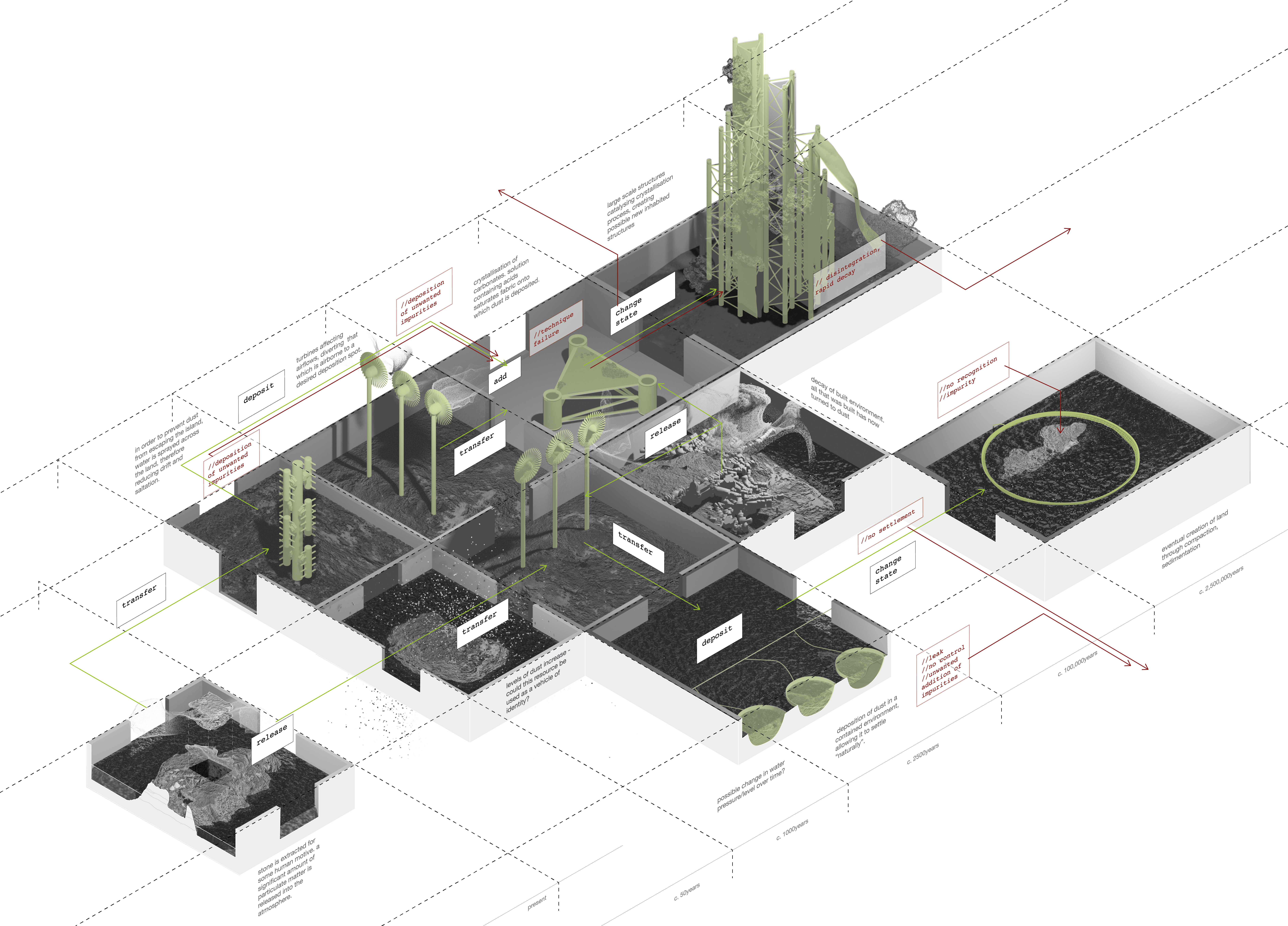


perennial drift: speculating possible futures for dust, an overlooked product of maltese landscapes of extraction
A Thesis Project submitted to the School of Architecture and Cities at the University of Westminster, London
MA Architecture (Digital Media) 2021/22 (Distinction)
MA Architecture (Digital Media) 2021/22 (Distinction)
Landscapes of extraction are agents of displacement and deposition, through which deep geological time is disrupted for any form of anthropocentric motive. This active relationship between humans and ground is not a linear process of creating negative and positive space, but a complex system controlled by several entities, all of which impact the distribution of the mass being displaced.
Taking the Maltese scenario as a main reference, the process of extraction has been seen to be a condition deeply rooted in the Maltese civilisation’s history, actively changing the landscape and, along with it, cultural memory. With the direct action of cutting and building, limestone is given form and meaning through its displacement, defining a special urban landscape where the built and unbuilt are one and the same. As the growth of the construction industry persists on a small island with very limited resources, questions of identity, meaning and legacy emerge. Limestone, the island’s only buildable resource, is over-extracted, while imported materials interfere with the legibility between source and product of the Maltese built environment.
This thesis project is centred around a product of limestone extraction which is often unaccounted for - airborne dust and particulate matter. Significant losses in volume arise as stone is extracted, dressed, processed and transported as it morphs into a built form, as dust is released from Earth into the atmosphere. Dust indirectly affects the Maltese population in a multitude of ways and across different scales, as it shapes daily life and the way the Maltese culture has shaped itself. This open-ended project sees dust as condition, a temporary state of flux, and speculates the potential creation of eventual architectures or landforms from this material. By looking across multiple scales of time and various levels of control, different mechanisms of collection, deposition and transformation are explored to question the possibility of the creation of new (land)forms serving as a testament to extraction.
For the complete publication, click here.
Taking the Maltese scenario as a main reference, the process of extraction has been seen to be a condition deeply rooted in the Maltese civilisation’s history, actively changing the landscape and, along with it, cultural memory. With the direct action of cutting and building, limestone is given form and meaning through its displacement, defining a special urban landscape where the built and unbuilt are one and the same. As the growth of the construction industry persists on a small island with very limited resources, questions of identity, meaning and legacy emerge. Limestone, the island’s only buildable resource, is over-extracted, while imported materials interfere with the legibility between source and product of the Maltese built environment.
This thesis project is centred around a product of limestone extraction which is often unaccounted for - airborne dust and particulate matter. Significant losses in volume arise as stone is extracted, dressed, processed and transported as it morphs into a built form, as dust is released from Earth into the atmosphere. Dust indirectly affects the Maltese population in a multitude of ways and across different scales, as it shapes daily life and the way the Maltese culture has shaped itself. This open-ended project sees dust as condition, a temporary state of flux, and speculates the potential creation of eventual architectures or landforms from this material. By looking across multiple scales of time and various levels of control, different mechanisms of collection, deposition and transformation are explored to question the possibility of the creation of new (land)forms serving as a testament to extraction.
For the complete publication, click here.